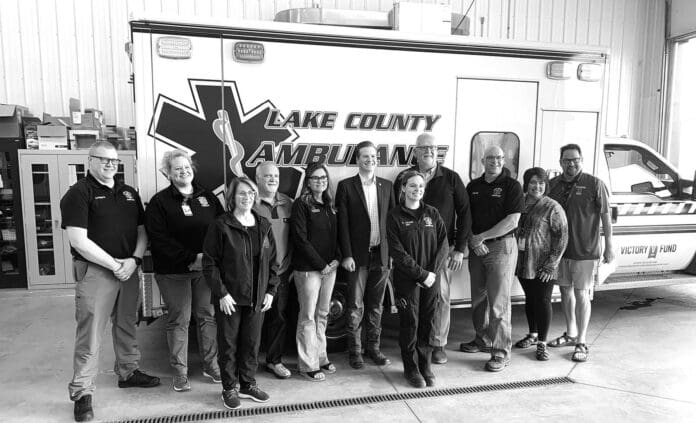In many rural communities, Emergency Medical Services are having trouble due to lack of funding and a lack of trained personnel. These shortages have led to increased response times in some areas of the State. A Pioneer Press article from December of 2023 indicated that in some rural parts of Minnesota, residents have had to wait up to 90 minutes for help to arrive after calling 911.
A number of State and local leaders gathered in Two Harbors last week for a roundtable discussion on the work that is being done to support and strengthen EMS services in Lake County. Additional stops were made in Silver Bay and Grand Marais that same day.
One thing that sets Lake County apart from other rural counties is the fact that back in the 1990s, the County Board made the decision to subsidize county EMS services. Those subsidies were relatively small in the beginning but have increased to around $500,000 per year as of 2017. This kind of forward thinking and action has meant that Lake County does not struggle as much with some of the difficulties that other rural EMS services have to face.
That being said, there are still challenges that need to be addressed. EMS equipment costs are high. A new ambulance costs in the neighborhood of $270,000. Ambulance crews are highly trained and are required, by statute, to carry certain medicines that have a limited shelf life. Medication costs are high, and medications that are past their shelf life have to be discarded. This is both expensive and wasteful and can’t be avoided without logistical considerations. Ambulance and rescue services in our area are non-profit endeavors. Perhaps Big Pharma can be enticed to take their eye off of profit margins and stock buybacks long enough to supply EMS services with needed medications at cost.
Speaking of cost, EMS services are typically reimbursed at a rate of 40 cents for every dollar they spend. This is a national trend and any business minded politician should know that this practice is unsustainable. These inequities need to be addressed at both the State and Federal level.
Senator Grant Hauschild, Representative Natalie Zelezniker and others have gone to bat recently to secure funds for area EMS services. $250,000 has been provided specifically for training and equipment. A portion of this money will actually be going to the Lake Superior School District with the plan that the district will collaborate with the Lake County Ambulance Service to develop and implement a training program for high school students. Superintendent Gina Kleive and THHS Principal Michael Emerson attended last week’s roundtable and expressed excitement about working with Lake County EMS to create such a program.
Training high school students as Emergency Medical Responders (EMRs) has a history on Lake County. With the renewed and needed focus in trades education in Lake County schools, the inclusion of EMT training will add yet another opportunity for local students to serve their communities while getting training that, if they choose, can be used to launch careers in any number of medical fields. Officials at last week’s meeting were of the opinion that getting youth involved as EMRs will not only fill a vital need in Lake County communities but, when combined with other trade education efforts, will help secure a growing workforce for the area.



